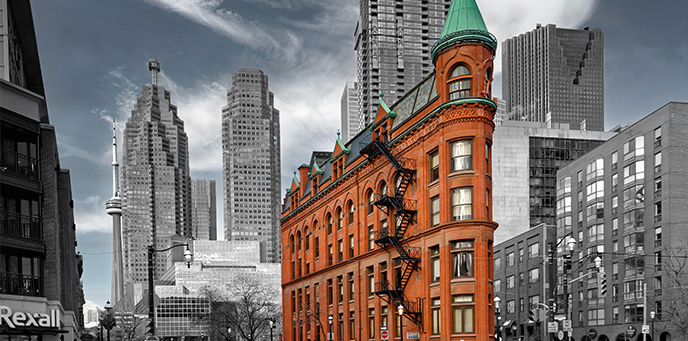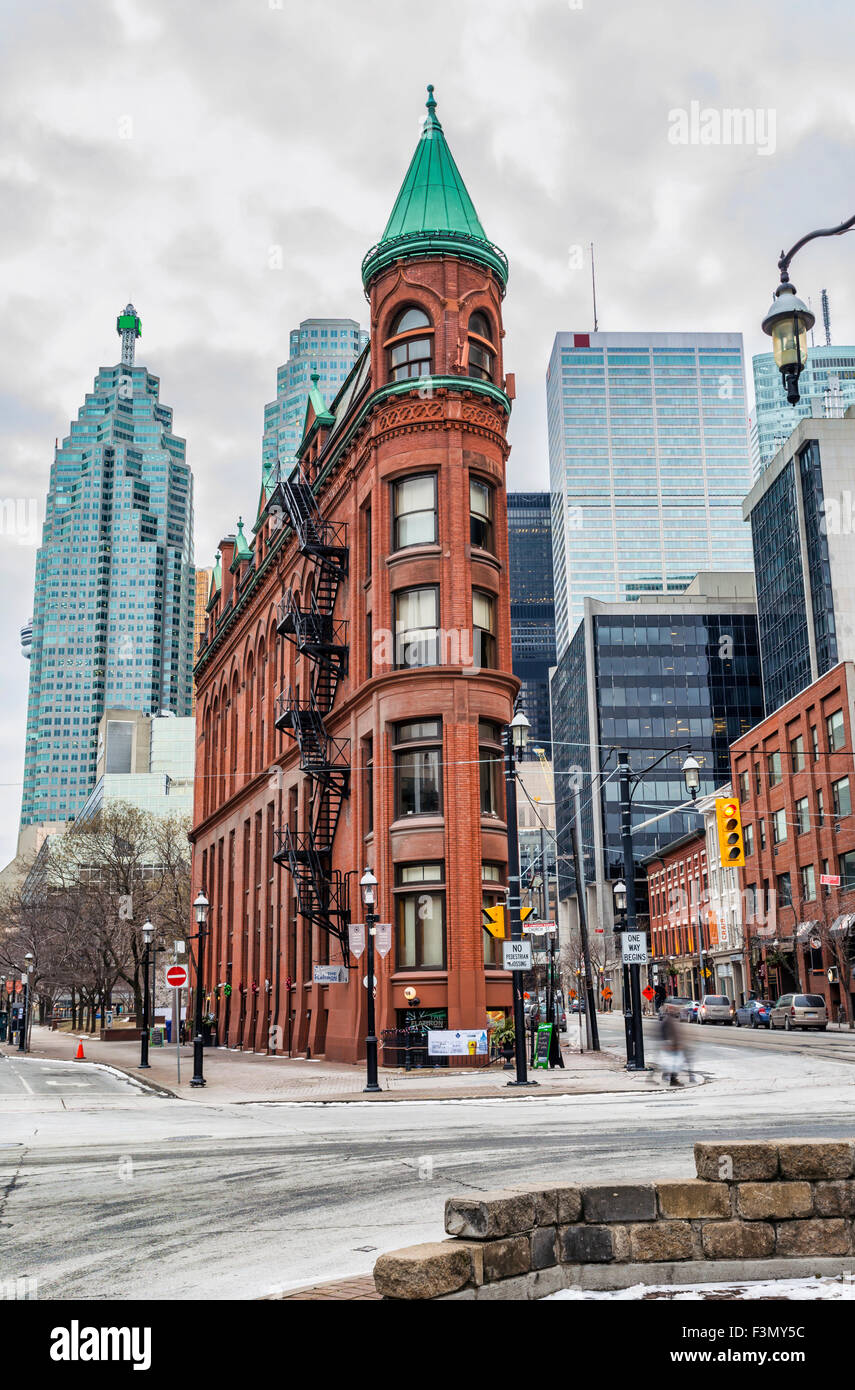Reveal the Rich Background Behind the Gooderham Structure in Toronto
The Gooderham Structure, an excellent symptom of Richardsonian Romanesque design in Toronto, has a storied past that expands past its striking red block façade. Commissioned by the significant Gooderham and Worts distillery in 1891, this structure has played a crucial duty in forming the metropolitan landscape of the St. Lawrence Market location.

Beginnings of the Gooderham Building
Constructing a lasting tradition, the Gooderham Structure, likewise called the Flatiron Building, became a sign of Toronto's building evolution in the late 19th century. The building's beginnings map back to 1891 when it was appointed by the Gooderham and Worts distillery, one of copyright's largest distilling business. Created by engineer David Roberts Jr. Gooderham Building address., the structure was distinctively placed at the junction of Front and Wellington Streets, benefiting from a triangular lot created by the convergence of these highways
The building's construction used neighborhood red block and terracotta, establishing a distinct aesthetic that matched the expanding cityscape. Originally meant to house the Gooderham and Worts workplaces, the building represented the success of the distillery, which had actually ended up being a substantial contributor to Toronto's economic climate. Significantly, the completion of the Gooderham Structure accompanied a period of fast urbanization that defined the age.
The establishment of this architectural gem not only showcased innovative design but also prepared for future growths in Toronto. Today, it stands as a testament to the city's rich background and flexibility, continuing to attract site visitors and admirers from around the world.
Architectural Importance
The architectural importance of the Gooderham Building expands past its unique flatiron shape, reflecting the innovative spirit of late 19th-century design. Completed in 1892, the framework exhibits the Richardsonian Romanesque style, characterized by its durable stonework, rounded arches, and elaborate detailing. The bold usage of different products, especially the warm red block and sedimentary rock accents, enhances its aesthetic allure and shows the craftsmanship of the era.
The structure's three-story layout is notable for its unified percentages and classy cornice, which add to its legendary shape versus the Toronto horizon. The narrow lot on which it stands posed unique challenges, yet the engineers, in this instance, made a structure that made best use of the available room while preserving visual balance.
Additionally, the Gooderham Building is a testament to the flexibility of architectural design in urban atmospheres. Its enduring existence among modern-day developments highlights the value of protecting historical architecture as a way of honoring a city's past. Today, it stays a beloved spots, showing both the architectural fads of its time and the progressing narrative of Toronto as a vivid metropolitan center.
Role in Toronto's Advancement
Emerging as an essential gamer in Toronto's urban landscape, the Gooderham Building added significantly to the city's development throughout the late 19th century. The building was originally designed to serve as a stockroom for the Gooderham and Worts distillery, which was one of the largest distilleries in the British Empire.
As the city broadened, the Gooderham Building became an important part of the St. Lawrence Market location, which was a center of profession and commerce. Its unique building design and popular existence drew attention, affecting the style of subsequent buildings around. The building's survival through numerous financial shifts and city advancements mirrors the durability and flexibility of Toronto's historic landscape. Fundamentally, the Gooderham Structure is not simply a building spots; it played a crucial function in shaping Toronto's identification and financial development during a transformative duration in its background.
Cultural Influence and Legacy
Gooderham Structure's unique building style and historic significance have left an enduring mark on Toronto's cultural landscape. As one of the city's most recognizable sites, its one-of-a-kind flatiron form and intricate brickwork exhibit the Victorian architectural patterns of the late 19th century. This framework not just serves as a visual anchor in the St. Lawrence area yet also embodies the spirit of a burgeoning city throughout a period of financial development.
The structure has ended up being a sign of Toronto's rich history, motivating neighborhood musicians and photographers that look for to catch its appeal. Its visibility has actually promoted a feeling of neighborhood identity, adding to the narrative of city advancement. The Gooderham Building has actually played an essential role in the tourist market, drawing in visitors excited to discover its storied past and building beauty.
Along with its aesthetic charm, the structure encapsulates a story of durability and adjustment, as it has transitioned via numerous usages over the decades - Gooderham Building address. Hence, the Gooderham Structure stands not only as a monolith of architectural importance but additionally as a testimony to the evolving social heritage of Toronto

Remediation and Preservation Initiatives
Countless restoration and conservation efforts have actually been carried out to make certain the Gooderham Structure continues to be an essential part of Toronto's building heritage. Initially completed in 1892, the building has actually gone through considerable improvements to address architectural worries while preserving its historical integrity. The most notable repair happened in the late 20th century when the building was diligently refurbished to meet modern-day safety standards without compromising its original design aspects.
These initiatives included repairing the distinctive red-brick façade, bring back the iconic triangular shape, and preserving the intricate stonework details. Furthermore, the building's inside has seen mindful updates that appreciate its historic importance, making certain that initial attributes such as wood light beams and attractive moldings are maintained.
The Gooderham Building is now safeguarded as an assigned heritage residential or commercial property under the Ontario Heritage Act, which helps safeguard it from improper changes. Neighborhood interaction has played a vital function in these preservation initiatives, with neighborhood advocacy teams raising understanding about the building's historic importance. As a result, the Gooderham Structure stands not just as a functional room however likewise as a testament to Toronto's abundant architectural background and withstanding cultural heritage.
Conclusion

Please visit one of our local supporters - Gamerama And The Repair Store - Iphone Repair Shop Toronto